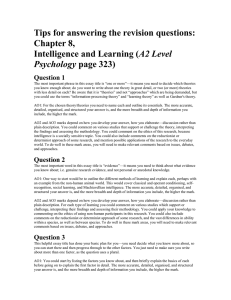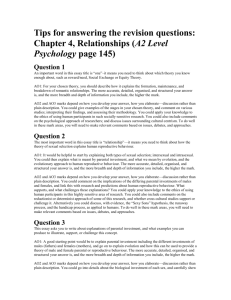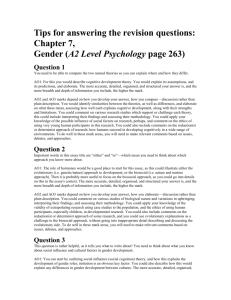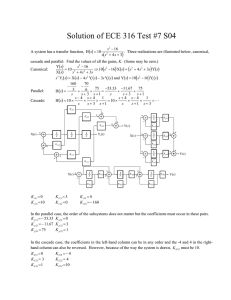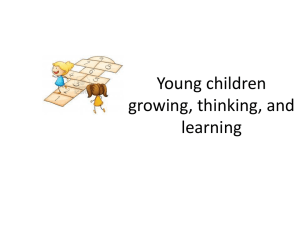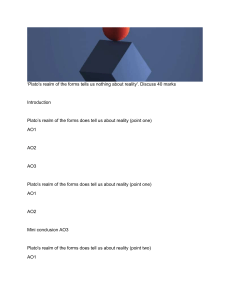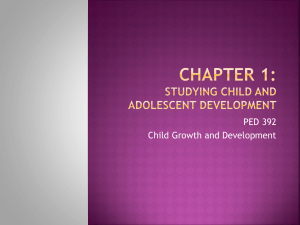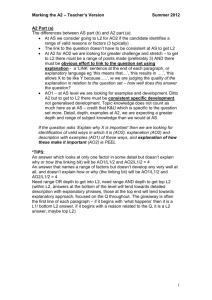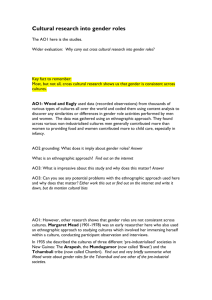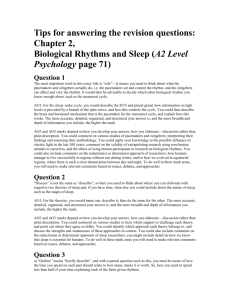Tips for answering the revision questions: Chapter 9
advertisement
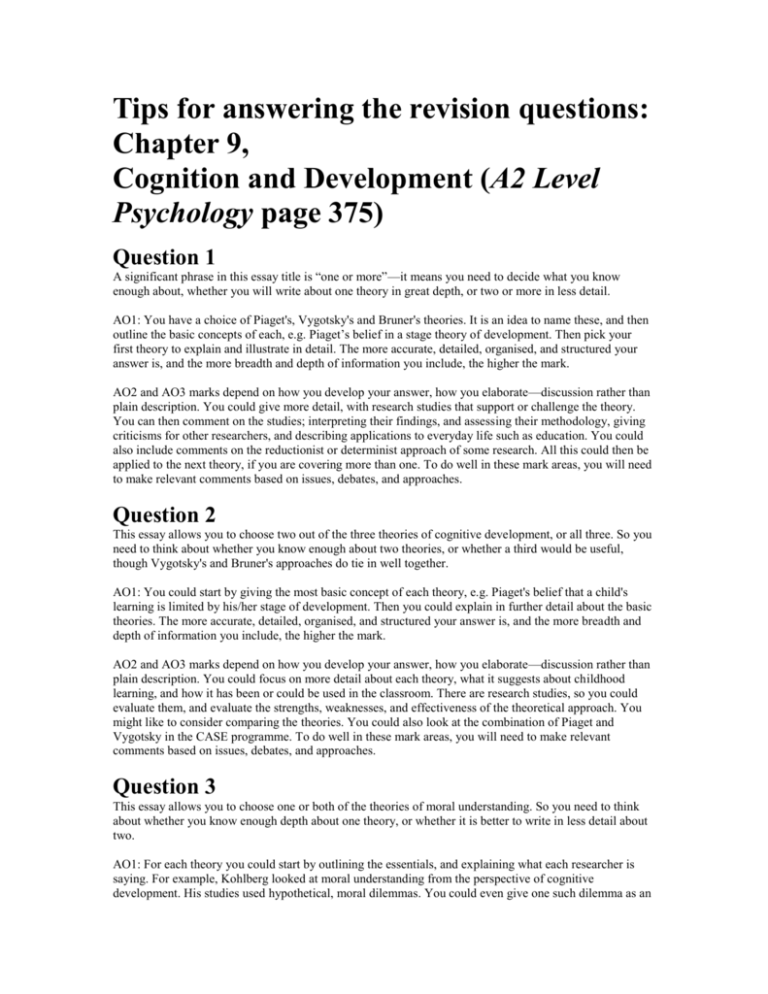
Tips for answering the revision questions: Chapter 9, Cognition and Development (A2 Level Psychology page 375) Question 1 A significant phrase in this essay title is “one or more”—it means you need to decide what you know enough about, whether you will write about one theory in great depth, or two or more in less detail. AO1: You have a choice of Piaget's, Vygotsky's and Bruner's theories. It is an idea to name these, and then outline the basic concepts of each, e.g. Piaget’s belief in a stage theory of development. Then pick your first theory to explain and illustrate in detail. The more accurate, detailed, organised, and structured your answer is, and the more breadth and depth of information you include, the higher the mark. AO2 and AO3 marks depend on how you develop your answer, how you elaborate—discussion rather than plain description. You could give more detail, with research studies that support or challenge the theory. You can then comment on the studies; interpreting their findings, and assessing their methodology, giving criticisms for other researchers, and describing applications to everyday life such as education. You could also include comments on the reductionist or determinist approach of some research. All this could then be applied to the next theory, if you are covering more than one. To do well in these mark areas, you will need to make relevant comments based on issues, debates, and approaches. Question 2 This essay allows you to choose two out of the three theories of cognitive development, or all three. So you need to think about whether you know enough about two theories, or whether a third would be useful, though Vygotsky's and Bruner's approaches do tie in well together. AO1: You could start by giving the most basic concept of each theory, e.g. Piaget's belief that a child's learning is limited by his/her stage of development. Then you could explain in further detail about the basic theories. The more accurate, detailed, organised, and structured your answer is, and the more breadth and depth of information you include, the higher the mark. AO2 and AO3 marks depend on how you develop your answer, how you elaborate—discussion rather than plain description. You could focus on more detail about each theory, what it suggests about childhood learning, and how it has been or could be used in the classroom. There are research studies, so you could evaluate them, and evaluate the strengths, weaknesses, and effectiveness of the theoretical approach. You might like to consider comparing the theories. You could also look at the combination of Piaget and Vygotsky in the CASE programme. To do well in these mark areas, you will need to make relevant comments based on issues, debates, and approaches. Question 3 This essay allows you to choose one or both of the theories of moral understanding. So you need to think about whether you know enough depth about one theory, or whether it is better to write in less detail about two. AO1: For each theory you could start by outlining the essentials, and explaining what each researcher is saying. For example, Kohlberg looked at moral understanding from the perspective of cognitive development. His studies used hypothetical, moral dilemmas. You could even give one such dilemma as an example. The more accurate, detailed, organised, and structured your answer is, and the more breadth and depth of information you include, the higher the mark. AO2 and AO3 marks depend on how you develop your answer, how you elaborate—discussion rather than plain description. You could give further and more detailed explanations of the chosen theory, with more examples and research studies, interpreting their findings, and assessing their methodology. You would be evaluating these, looking at strengths, weaknesses, validity, and reliability. You can also, from our modern viewpoint, discuss the ethical issue of using children in research. You could also include comments on the reductionist or determinist approach of some research. To do well in these mark areas, you will need to make relevant comments based on issues, debates, and approaches. Question 4 Looking at the mark scheme tells you that you will need to write quite a lot about Theory of Mind, as well as social cognition development. Remember that when the questions says “including” you must write about those things. Here you must include perspective-taking and mirror neurons, but you do not have to write equal amounts about each. If you know more about one, then write more about it, but don't omit the other one! AO1: It would be sensible to begin by explaining Theory of Mind, elaborating with research studies and perhaps including descriptions of autism as a Theory of Mind disorder. AO2 and AO3 marks depend on how you develop your answer, how you elaborate—discussion rather than plain description. Autism would lead well into perspective-taking, with explanation of the theory, and elaboration and evaluation using research findings. You could then move on to a biological explanation of social cognition development, and the mirror neuron system. This too needs some explanation and elaboration, with research findings.

